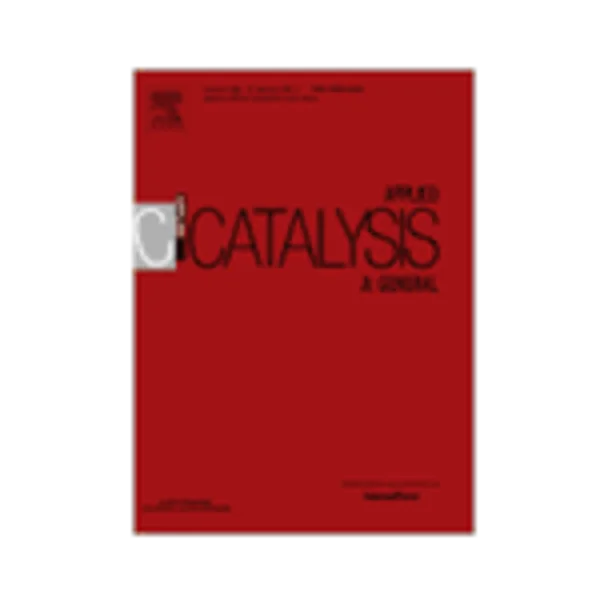-
establishing the role of brønsted acidity and porosity for the catalytic etherification of glycerol with tert-butanol by modifying zeolites
جزئیات بیشتر مقاله- تاریخ ارائه: 1392/07/24
- تاریخ انتشار در تی پی بین: 1392/07/24
- تعداد بازدید: 970
- تعداد پرسش و پاسخ ها: 0
- شماره تماس دبیرخانه رویداد: -
the role of brønsted acidity and porosity for the etherification of glycerol with tert-butanol was studied by modifying the surface and acidic characteristics of three commercial na-zeolites (mordenite, beta and zsm-5) by protonation, dealumination, desilication-protonation, lanthanum-exchange and fluorination. catalytic results can be related to the amount and strength of brønsted acid sites together with the accessibility of the reactants to the acid sites. modifications made on zsm-5 did not affect considerably its surface and acidic properties, and consequently its catalytic behaviour, leading moderate conversion values and low/null selectivity to di- and tri-tertiary butyl ethers of glycerol (h-gtbe). mordenite catalysts showed low conversion and moderate/low selectivity to h-gtbe due to the lower amount of acid centres, lower external surface area, more hydrophilic character and lower dimensionality of the mordenite structure when compared with the other two zeolites. beta catalysts exhibited the best catalytic results. the introduction of fluorine in the beta zeolite framework generated higher amounts of stronger acid sites, which were able to transform glycerol until the glycerol triether. thus, fluorinated beta yielded the best conversion (75%) and selectivity to h-gtbe (37%) with the formation of glycerol triether in low amounts. these values were comparable to those obtained at the same reaction conditions with an amberlyst-15, an acid catalyst traditionally used for this reaction.
مقالات جدیدترین رویدادها
-
استفاده از تحلیل اهمیت-عملکرد در ارائه الگوی مدیریت خلاقیت سازمانی و ارائه راهکار جهت بهبود
-
بررسی تاثیر ارزش وجوه نقد مازاد بر ساختار سرمایه شرکت های پذیرفته شده در بورس اوراق بهادار تهران
-
بررسی تأثیر سطح افشای ریسک بر قرارداد بدهی شرکت های پذیرفته شده در بورس اوراق بهادار تهران
-
بررسی تأثیر رتبه بندی اعتباری مبتنی بر مدل امتیاز بازار نوظهور بر نقد شوندگی سهام با تأکید بر خصوصی سازی شرکت ها
-
تأثیر آمیخته بازاریابی پوشاک ایرانی بر تصویر ذهنی مشتری پوشاک ایرانی (هاکوپیان)
-
بررسی تأثیر پول نقد ناکافی و اضافی و چرخه تبدیل وجه نقد بر عملکرد آینده شرکت های فلزات اساسی
-
استفاده از مدل aquacrop برای مدیریت آب و تعیین عمق و زمان آبیاری گندم زمستانه
-
تأثیر زبری بستر رودخانه در انتشار امواج ناشی از شکست سد خاکی (مطالعه موردی رودخانه آجی چای و سد شهید مدنی )
-
کاربرد روش بدون شبکه المان های طبیعی با درون یاب non-sibson در مدل سازی نشت آب از پی سد با دیواره آب بند
-
le nouveau roman : l'analyse de la nouvelle de houshang golshiri "har do ruye sekeh"
مقالات جدیدترین ژورنال ها
-
مدیریت و بررسی افسردگی دانش آموزان دختر مقطع متوسطه دوم در دروان کرونا در شهرستان دزفول
-
مدیریت و بررسی خرد سیاسی در اندیشه ی فردوسی در ادب ایران
-
واکاوی و مدیریت توصیفی قلمدان(جاکلیدی)ضریح در موزه آستان قدس رضوی
-
بررسی تاثیر خلاقیت، دانش و انگیزه کارکنان بر پیشنهادات نوآورانه کارکنان ( مورد مطالعه: هتل های 3 و 4 ستاره استان کرمان)
-
بررسی تاثیر کیفیت سیستم های اطلاعاتی بر تصمیم گیری موفق در شرکتهای تولیدی استان اصفهان (مورد مطالعه: مدیران شرکتهای تولیدی استان اصفهان)
-
بررسی و تحلیل اصول و منابع فقهی حقوق عمومی در حکومت و اسلام
-
بهینه سازی مسئله پخش بار اقتصادی با درنظرگرفتن محدودیت های عملیاتی با استفاده از الگوریتم ژنتیک
-
تأثیر پایبندی سازمانی بر رفتارهای انحرافی در محیط کار در پرتو تعلق خاطر کاری و سرمایه های روان شناختی
-
effects of fiber volume fraction and aspect ratio on mechanical properties of hybrid steel fiber reinforced concrete
-
non-uniform relationship for soil-foundation reaction




سوال خود را در مورد این مقاله مطرح نمایید :